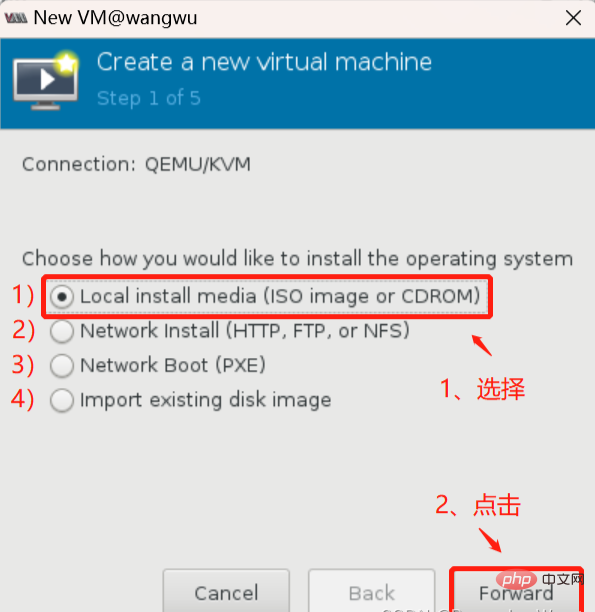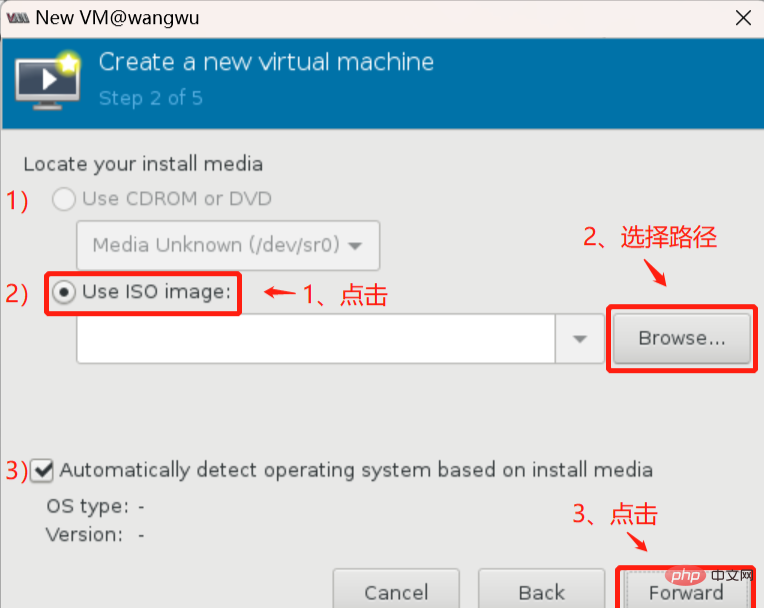 Operation and Maintenance
Operation and Maintenance
 Linux Operation and Maintenance
Linux Operation and Maintenance
 What is the use of linux virtualization?
What is the use of linux virtualization?
What is the use of linux virtualization?
In Linux, virtualization can expand the capacity of hardware and simplify the reconfiguration process of software. Advantages of Linux virtualization: 1. Super resource allocation; 2. Reduce capital costs and operation and maintenance costs; 3. Minimize or eliminate downtime; 4. Improve the efficiency, effectiveness, agility and responsiveness of the IT department; 5. Speed up the deployment of applications and resources; 6. Improve business continuity and disaster recovery capabilities; 7. Simplify data center management; 8. Reduce port conflicts.

#The operating environment of this tutorial: linux7.3 system, Dell G3 computer.
What is Linux virtualization
Virtualization (Virtualization) is a resource management technology that combines various physical resources of the computer (CPU, memory, disk space , network adapter, etc.), it is abstracted, converted and presented, and can be divided and combined into one or more computer configuration environments, and can be re-divided and re-assembled to maximize the rational use of physical resources.
Virtualization technology is a technology that abstracts and converts physical computer resources into virtual computer resources for use by programs. The computer resources referred to here include computing control resources provided by the CPU, data storage resources provided by the hard disk, network transmission resources provided by the network card, etc.
Virtualization technology can expand the capacity of hardware and simplify the reconfiguration process of software. CPU virtualization technology can simulate multiple CPUs in parallel with a single CPU, allowing one platform to run multiple operating systems at the same time, and applications can run in independent spaces without affecting each other, thereby significantly improving computer work efficiency - Baidu Encyclopedia. Virtualization mainly refers to a special technology that provides users with an abstract, unified, simulated computing environment (called a virtual machine) by hiding the actual physical characteristics of a specific computing platform - IBM definition.
Advantages of Virtualization
(1) The resources are over-sized, such as 128G of physical memory, and 200G of memory can be allocated to the virtual machine. It is generally used in test environments and generally in production environments. Not recommended.
(2) Reduce capital costs and operation and maintenance costs
(3) Minimize or eliminate downtime
(4) Improve the efficiency, effectiveness and agility of the IT department stability and responsiveness
(5) Accelerate the deployment of applications and resources
(6) Improve business continuity and disaster recovery capabilities
(7) Simplify data center management
(8) Availability of true Software-Defined Data Center
(9) Reduce port conflicts
Common virtualization vendors and products
Series |
##Common PC/Server Version |
| VMware | VMware Workstation, vSphere |
| Microsoft | VirtualPC, Hyper-V |
| RedHat | KVM, RHEV |
| Oracle VM VirtualBox | |
| Xen |
The above is the detailed content of What is the use of linux virtualization?. For more information, please follow other related articles on the PHP Chinese website!

Hot AI Tools

Undresser.AI Undress
AI-powered app for creating realistic nude photos

AI Clothes Remover
Online AI tool for removing clothes from photos.

Undress AI Tool
Undress images for free

Clothoff.io
AI clothes remover

Video Face Swap
Swap faces in any video effortlessly with our completely free AI face swap tool!

Hot Article

Hot Tools

Notepad++7.3.1
Easy-to-use and free code editor

SublimeText3 Chinese version
Chinese version, very easy to use

Zend Studio 13.0.1
Powerful PHP integrated development environment

Dreamweaver CS6
Visual web development tools

SublimeText3 Mac version
God-level code editing software (SublimeText3)

Hot Topics
 What computer configuration is required for vscode
Apr 15, 2025 pm 09:48 PM
What computer configuration is required for vscode
Apr 15, 2025 pm 09:48 PM
VS Code system requirements: Operating system: Windows 10 and above, macOS 10.12 and above, Linux distribution processor: minimum 1.6 GHz, recommended 2.0 GHz and above memory: minimum 512 MB, recommended 4 GB and above storage space: minimum 250 MB, recommended 1 GB and above other requirements: stable network connection, Xorg/Wayland (Linux)
 Linux Architecture: Unveiling the 5 Basic Components
Apr 20, 2025 am 12:04 AM
Linux Architecture: Unveiling the 5 Basic Components
Apr 20, 2025 am 12:04 AM
The five basic components of the Linux system are: 1. Kernel, 2. System library, 3. System utilities, 4. Graphical user interface, 5. Applications. The kernel manages hardware resources, the system library provides precompiled functions, system utilities are used for system management, the GUI provides visual interaction, and applications use these components to implement functions.
 How to run java code in notepad
Apr 16, 2025 pm 07:39 PM
How to run java code in notepad
Apr 16, 2025 pm 07:39 PM
Although Notepad cannot run Java code directly, it can be achieved by using other tools: using the command line compiler (javac) to generate a bytecode file (filename.class). Use the Java interpreter (java) to interpret bytecode, execute the code, and output the result.
 vscode cannot install extension
Apr 15, 2025 pm 07:18 PM
vscode cannot install extension
Apr 15, 2025 pm 07:18 PM
The reasons for the installation of VS Code extensions may be: network instability, insufficient permissions, system compatibility issues, VS Code version is too old, antivirus software or firewall interference. By checking network connections, permissions, log files, updating VS Code, disabling security software, and restarting VS Code or computers, you can gradually troubleshoot and resolve issues.
 How to check the warehouse address of git
Apr 17, 2025 pm 01:54 PM
How to check the warehouse address of git
Apr 17, 2025 pm 01:54 PM
To view the Git repository address, perform the following steps: 1. Open the command line and navigate to the repository directory; 2. Run the "git remote -v" command; 3. View the repository name in the output and its corresponding address.
 vscode terminal usage tutorial
Apr 15, 2025 pm 10:09 PM
vscode terminal usage tutorial
Apr 15, 2025 pm 10:09 PM
vscode built-in terminal is a development tool that allows running commands and scripts within the editor to simplify the development process. How to use vscode terminal: Open the terminal with the shortcut key (Ctrl/Cmd). Enter a command or run the script. Use hotkeys (such as Ctrl L to clear the terminal). Change the working directory (such as the cd command). Advanced features include debug mode, automatic code snippet completion, and interactive command history.
 Where to write code in vscode
Apr 15, 2025 pm 09:54 PM
Where to write code in vscode
Apr 15, 2025 pm 09:54 PM
Writing code in Visual Studio Code (VSCode) is simple and easy to use. Just install VSCode, create a project, select a language, create a file, write code, save and run it. The advantages of VSCode include cross-platform, free and open source, powerful features, rich extensions, and lightweight and fast.
 Can vscode be used for mac
Apr 15, 2025 pm 07:36 PM
Can vscode be used for mac
Apr 15, 2025 pm 07:36 PM
VS Code is available on Mac. It has powerful extensions, Git integration, terminal and debugger, and also offers a wealth of setup options. However, for particularly large projects or highly professional development, VS Code may have performance or functional limitations.










